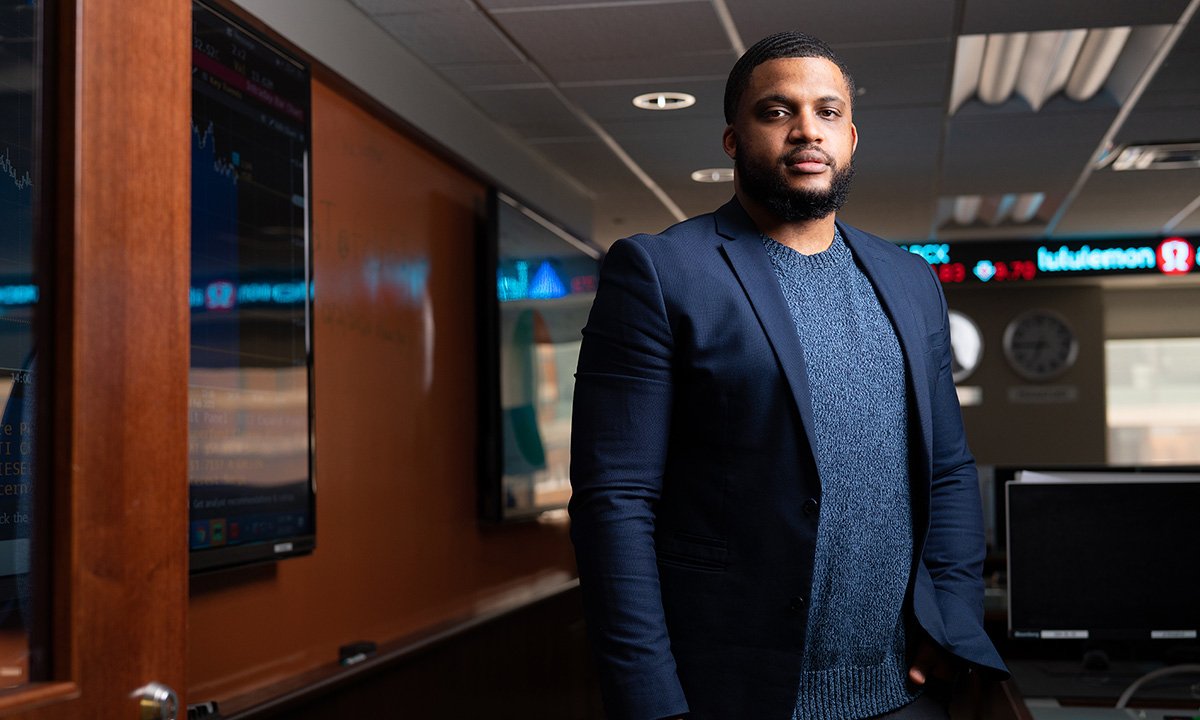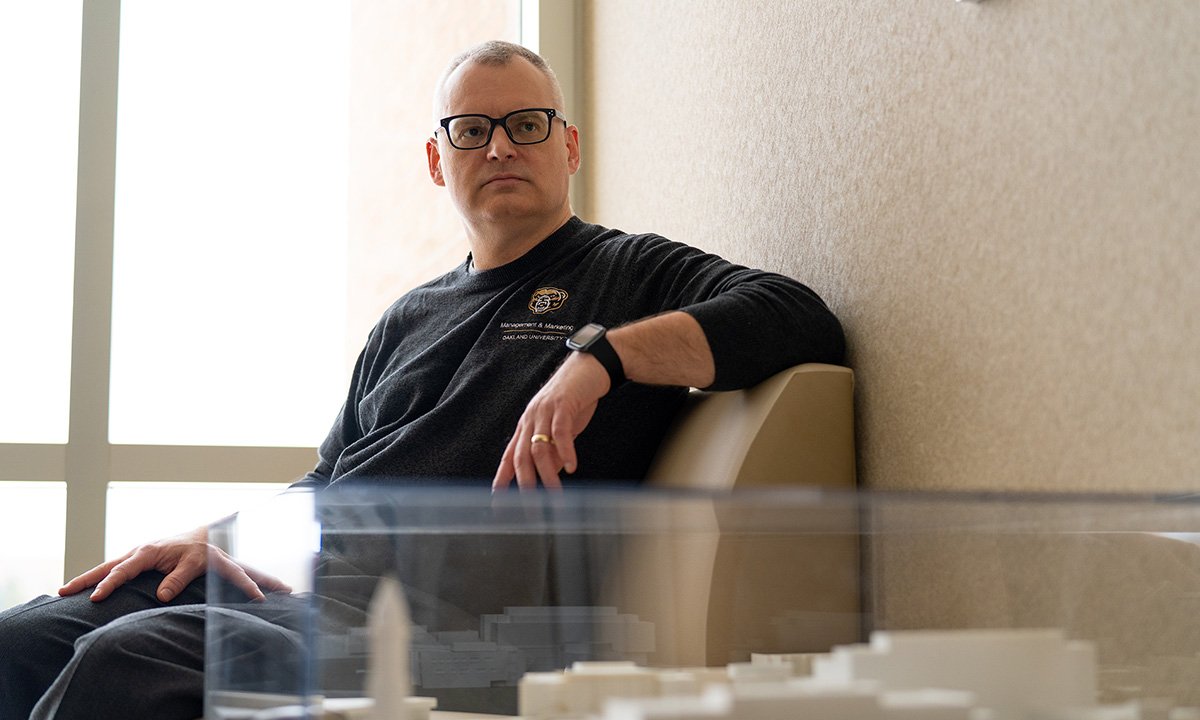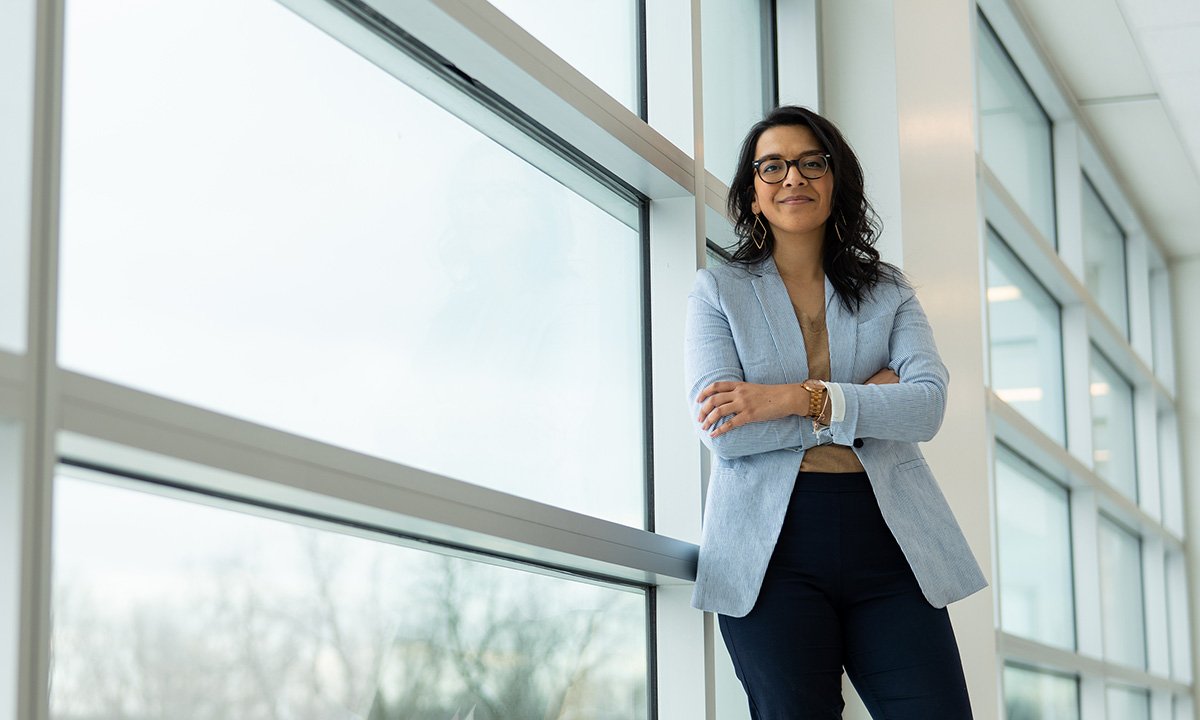Leadership Evolution
Investigating whole-person leadership
Few experiences in business are as invigorating or, in some cases, terrifying as ascending to a leadership role. The assumption that some people are born leaders while others simply do not have what it takes is a significant source of anxiety.
Oakland University Assistant Professor of Management Michelle Hammond, Ph.D, has spent much of her career focused on the process of leadership development, including how people grow to become confident individuals who are comfortable taking the reins, whether on the job, in their communities or in their own homes.
Even people long admired as being consummate leaders – think Teddy Roosevelt or Abraham Lincoln – had to work for that mantel.
“People we see as natural born leaders developed that skill over time, so much that it now seems they were born with it,” says Dr. Hammond, who not only teaches and conducts research on leadership but also consults, guiding executives forward in this area.
Dr. Hammond urges her students to observe how their leadership impacts those around them. She elevates the lesson beyond theory into the real-world. “I build a lot of reflection into my teaching,” she says. “Whether it’s undergraduate business students or our Executive MBA students, I ask them to look at their whole lives and where leadership fits. Emotional regulation, for example, is important for a leader. I suggest they see how they can practice those skills with their family and friends as well as at the office.”
She also encourages her students to explore their assumptions about leadership and team dynamics. “They can mean different things to different people,” Dr. Hammond says. To foster clarity, her students sign a contract before beginning group projects. The contract defines their role within the team, covering how they will participate to how they will contribute their ideas. “It helps them be better leaders and better team players,” she says.
For many people, their own expectations about how a leader should act or what responsibilities a leader must shoulder stand in the way of seeking those roles, even when the roles are offered to them. “I see a lot of people who really struggle with self-doubt,” says Dr. Hammond. “There are perceptions of risk – what if I can’t do it?”
Dr. Hammond’s goal is to promote understanding so people can grow and evolve, and realize that they do not have to captain the entire ship alone. “It’s about self-awareness, how we see ourselves as leaders and how we can lead outside our positions,” Dr. Hammond says. That means implementing ideas about leadership into every facet of life, including what people do as parents or as coaches of their kids’ teams, or in serving on a neighborhood committee.
As a professor, Dr. Hammond works to ensure OU business students comprehend the real-world applications of what they learn. Recently, she welcomed a corporate leader from Webasto, a German-based automotive roofing company with its North American headquarters based in Rochester Hills, to talk with her Executive MBA class about his role in transforming Webasto’s corporate culture, a move that enhanced profitability and, just as importantly, fostered the creation of a highly engaged workforce.
Outside the classroom, Dr. Hammond continues to innovate through research. Currently, she is looking at the risks women leaders face as they seek new roles in the workplace and is conducting an expansive investigation of leadership development outside the workforce. She also plans to study how groups lead. “We’ve studied a lot at the individual level,” Dr. Hammond says. “Now we want to delve into how we can enhance and improve collective leadership at organizations and build those changes into company cultures.”

 April 07, 2020
April 07, 2020
 By Liz Lent
By Liz Lent









